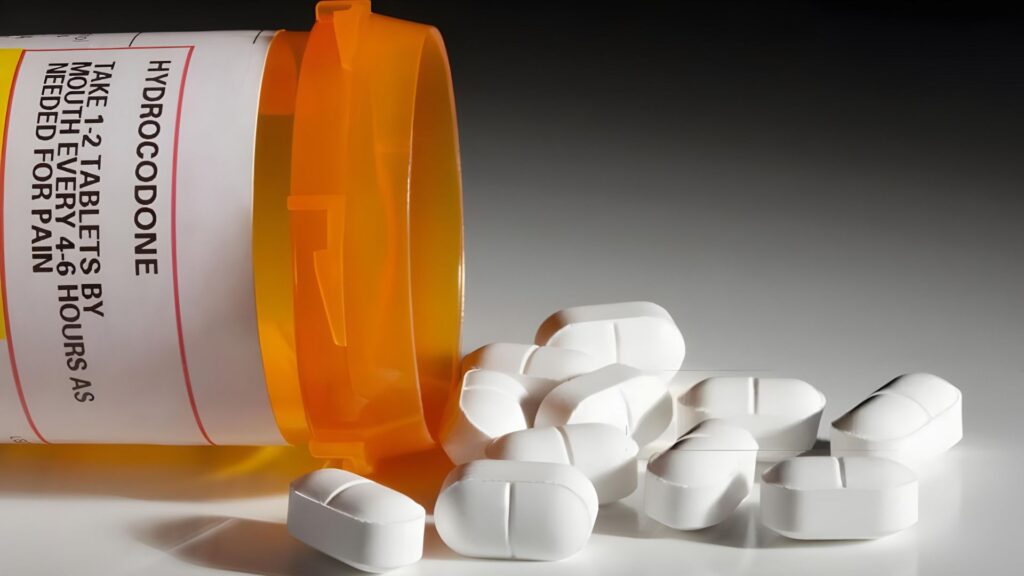Percocet is a prescription pain reliever often prescribed after surgery or for managing moderate to severe pain. Used correctly, it can be effective, but misuse or misunderstanding of its effects can lead to serious health risks.
This article focuses on the timeline of how Percocet remains in your body, including how it’s metabolized, how long it can be detected in drug tests, and the many variables, like dosage, metabolism, and frequency of use, that influence its presence in your system.

What Is Percocet?
Percocet is a prescription opioid medication designed to manage moderate to severe pain. It contains two main components: oxycodone, an opioid that alters pain signals in the brain, and acetaminophen, a non-opioid pain reliever that works by a different mechanism. When you take Percocet, both ingredients work together to achieve better pain control than either could alone. This combination is effective, but it also increases the need to monitor for side effects, misuse, and the duration of the medication’s presence in the system after the last dose.
Seeking treatment at a specialized Percocet addiction treatment center provides personalized therapy and support to address both physical dependence and underlying issues, boosting the chances of long-term recovery.
How Does Percocet Work and How Long Do Its Effects Last?
Percocet takes effect by acting on the central nervous system. Oxycodone binds to opioid receptors in the brain and spinal cord, reducing pain perception, while acetaminophen enhances overall pain relief. The effects of Percocet typically begin within 10 to 30 minutes after swallowing a dose.
For most people, pain-relieving effects last 3 to 6 hours, so it’s often prescribed to be taken every 4 to 6 hours as needed. However, how long Percocet stays in your system depends on many factors, including dosage, frequency of use, and individual metabolism.
Percocet Half-Life and Metabolism
The half-life of a drug refers to how long it takes for half of the drug to be eliminated from the body. The half-life of oxycodone is about 3.2 to 4 hours, while the acetaminophen component has a half-life of around 2 to 3 hours. It usually takes about five half-lives for a single dose of the drug to leave the body almost entirely.
That means most of the oxycodone is out of the system 16 to 20 hours after use, though small amounts may linger longer. Both drugs are metabolized in the liver and then excreted through urine.
Drug Testing: How Long Can Percocet Be Detected?
The detection window for Percocet depends on the type of drug test being used and several individual factors:
Urine Test
Urine tests can detect Percocet and its metabolites, particularly oxycodone, for about 48 hours after the last dose. This is because the kidneys filter the drug and its breakdown products into the urine. In cases of chronic use or high doses, the drug can linger longer in the system, extending the detection window. Urine tests are among the most common drug screening methods due to their cost-effectiveness and relative ease of collection.
Blood Test
Oxycodone, the opioid component of Percocet, is generally detectable in the bloodstream for up to 24 hours after the last use. Blood tests provide a narrower detection window because drugs metabolize and clear from the blood more quickly than from urine. This method is less commonly used for routine drug screening but is more precise for detecting recent use or overdose.
Saliva Test
Percocet can be detected in saliva for approximately 1 to 4 days. Saliva tests are less invasive and easier to administer, making them useful for quick screening in various settings. The drug enters saliva through blood diffusion, reflecting recent use, but detection times vary depending on factors such as dose and metabolism.

Hair Test
Hair follicle testing can reveal Percocet use for up to 90 days or longer after the last dose. This is because drug metabolites incorporate into the hair as it grows, providing a longer record of drug exposure. Hair tests are less sensitive to recent use but are useful for assessing chronic or long-term drug use history.
These detection windows are averages and can vary widely based on metabolism, dosage, frequency of use, overall health, and individual differences in how the drug is processed in the body.
Factors That Influence How Long Percocet Lasts in Your System
Several factors influence how long Percocet remains in your system and is detectable after your last dose:
- Metabolism: People with faster metabolisms eliminate it more quickly, while those with slower metabolisms may retain the drug longer.
- Age and Health: Older adults and individuals with liver problems may take longer to metabolize and eliminate the medication.
- Body Composition: Higher body fat can affect how long opioids stay in your system.
- Dose and Frequency: Higher doses and frequent use result in the drug staying in the body longer and extending the detection window.
- Other Medications: Drugs that affect liver enzyme activity can speed up or slow down Percocet metabolism, altering how long it stays.
- Hydration and General Health: Staying well hydrated and healthy may help the body eliminate the drug faster.
Why Knowing This Matters: Risks, Safety, and Withdrawal
Being aware of how long Percocet stays in your system is vital for managing risks of overdose, accidental interactions, or withdrawal syndrome.
Abruptly stopping taking the drug after prolonged use can cause withdrawal symptoms such as restlessness, sweating, muscle aches, nausea, and anxiety.
Knowing these timelines is also important for anyone facing drug testing requirements for work, legal, or medical reasons.
Final Thoughts from Radix Recovery
How long Percocet stays in your system depends on the drug’s half-life, dosage, frequency of use, metabolism, and other health factors. Understanding these details can help people use the medication responsibly, manage withdrawal symptoms, and improve the quality of life for people who are prescribed Percocet or struggling with its use.
At Radix Recovery in Cedar Rapids, we specialize in evidence-based treatment for individuals struggling with drug dependence and addiction. Whether the addiction involves Percocet or other prescription opioids like oxycodone, our compassionate, medically qualified team is dedicated to providing personalized care that supports lasting recovery and overall well-being.






































































































